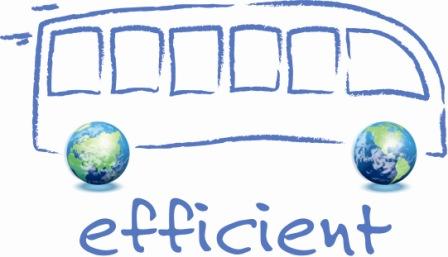| // Direct marketing campaigns |   Targeting a segment directly with marketing campaigns may result in an increase in passengers. This is mostly used with new residents and within new residential areas. Targeting a segment directly with marketing campaigns may result in an increase in passengers. This is mostly used with new residents and within new residential areas.
Example: Through a direct marketing campaign, Stockholm targeted new inhabitants in several neighbourhood areas. The residents received printed information in their mailboxes, including information about travel possibilities, free try-out tickets and a VIP phone number for help in personal travel planning. As this campaign was successful in terms of new passengers and increased revenues, the city expanded the campaign to more than 180 000 people moving into the Stockholm region. Metrobus, which is a company operating local bus services in Greater London, Surrey, Kent, East & West Sussexwas amongst the first bus companies to create a presence for itself on Facebook and to use this social networking media to advertise and communicate with current and potential passengers. Metrobus is targeting and interacting with people that conventional bus advertising might not normally reach as well as communicating with current passengers just as effectively and efficiently as with the use of traditional formats. | For more information: Sustainable Urban Transport, Final report from the European project Trendsetter, p.39 Evaluation Report, Public Transport, Trendsetter, p.29 | // Passenger focus groups |   In-depth market research helps to find out what customers desire and can be used for the customisation of transport services. One way of doing this is with passenger focus groups. Passenger focus groups consist of representative customers and moderators. Transport issues are jointly discussed, feedback is given, brainstorming is done, solutions are presented and examined and finally an agreement is reached on the most important measures to be taken. In-depth market research helps to find out what customers desire and can be used for the customisation of transport services. One way of doing this is with passenger focus groups. Passenger focus groups consist of representative customers and moderators. Transport issues are jointly discussed, feedback is given, brainstorming is done, solutions are presented and examined and finally an agreement is reached on the most important measures to be taken.
Example: Passenger focus groups are used in Berlin for receiving feedback on new mobility and travel measures which have been introduced. During numerous meetings, different stakeholders have the opportunity to express their views on initiatives Berlin is planning to realise for better and cleaner transport. | For more information: CIVITAS in Europe, A proven framework for progress in urban mobility, p.20 | // Mobility Management |     Mobility management helps convince the public to change their travel behaviour through the development of strategies and actions for fulfilling the transport needs of companies, institutions and individuals. Mobility management activities are often seen as “soft measures” and include new possibilities of managing mobility demand, such as travel plans and awareness campaigns. Mobility management helps convince the public to change their travel behaviour through the development of strategies and actions for fulfilling the transport needs of companies, institutions and individuals. Mobility management activities are often seen as “soft measures” and include new possibilities of managing mobility demand, such as travel plans and awareness campaigns. Example: Through company mobility plans, Nantes is promoting the use of collective/public transport. The project involves approximately 2 200 municipal employees and 11 000 private sector employees, as well as the business community. The new travel plans are aimed at a 50% reduction of fares for the public transport of employees possessing annual passes and the removal of employee car parking spaces. | For more information: Sustainable Urban Transport, Final report from the European project Trendsetter, pp. 38-40 CIVITAS in Europe, A proven framework for progress in urban mobility, pp.17-19 Greener Journeys, Make the switch to bus and coach, p.2 |
|
|














